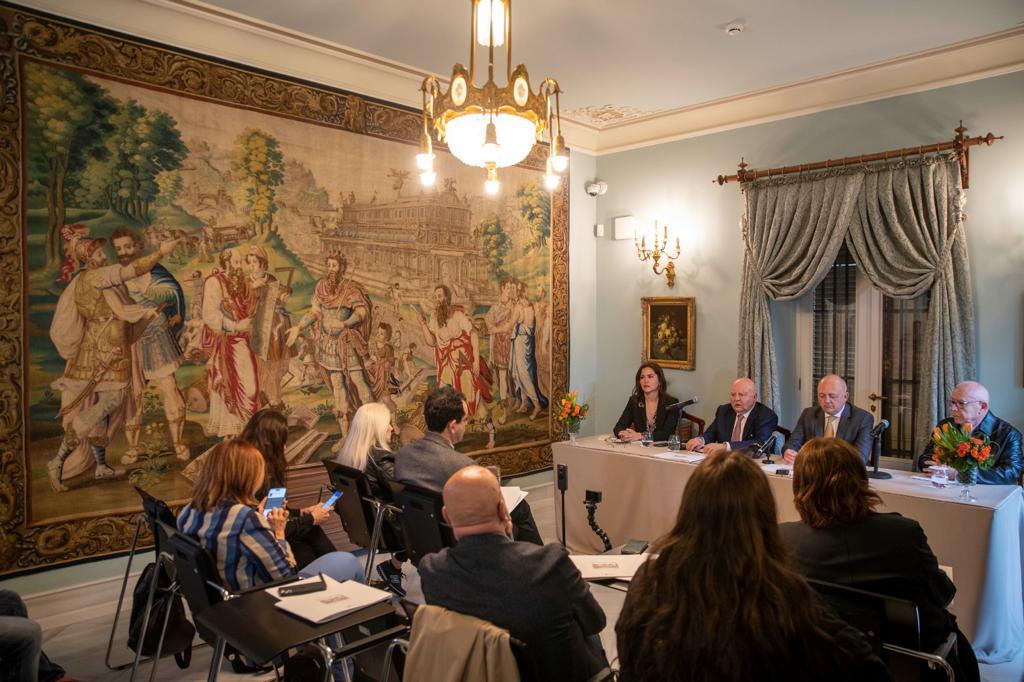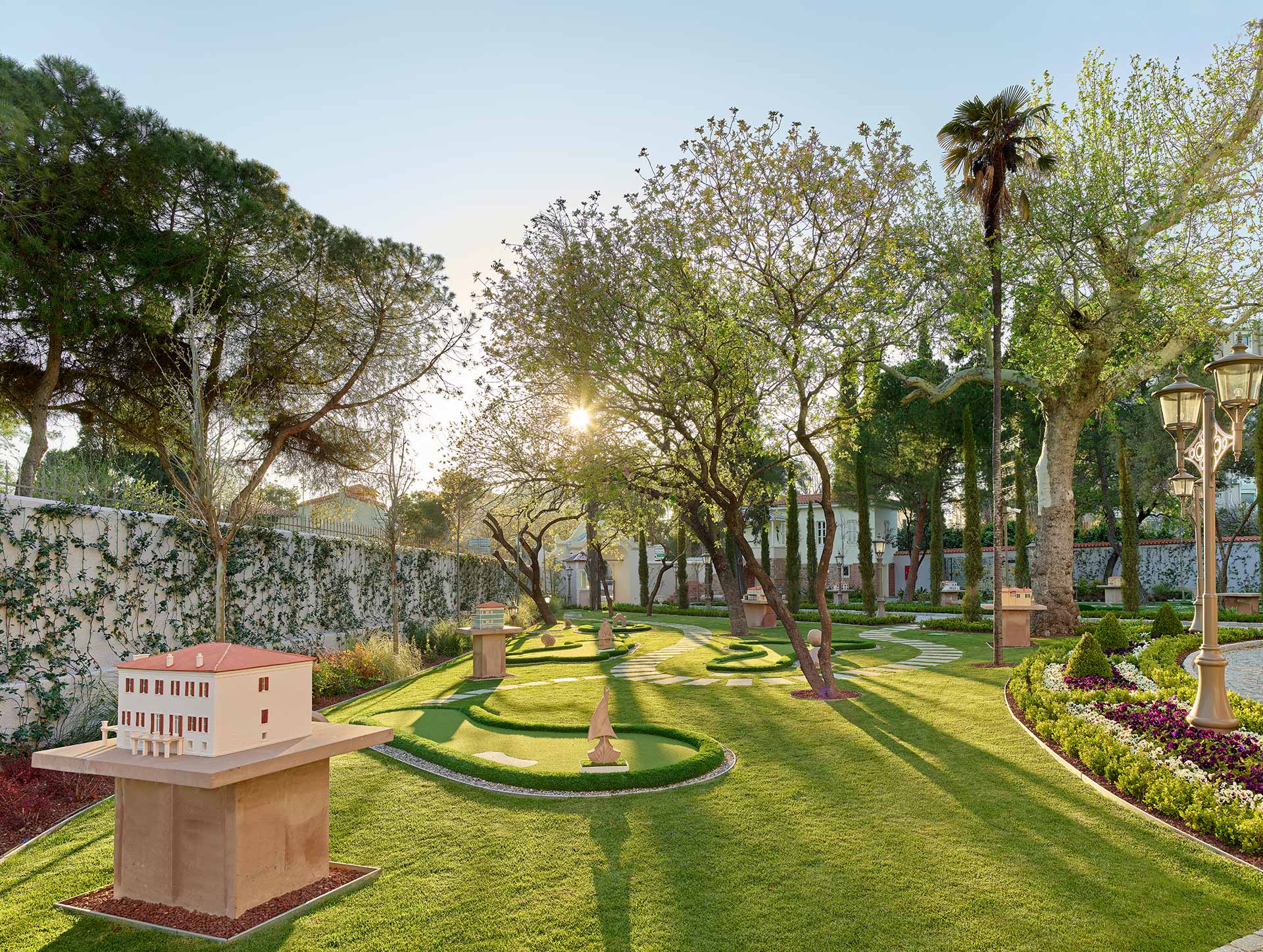Having restored the historic Mattheys Mansion and reintroduced it to Izmir, Arkas presents a selection from the Arkas Carpet Collection to art lovers at the Arkas Art Bornova Mattheys Mansion.
With the aim of transforming Izmir into a city of art, Arkas has been making significant investments in arts for many years now. As part of its endeavors, it is inaugurating its fourth art center at Mattheys Mansion, renowned for its architecture and history, located in Bornova. Having faithfully restored two centuries-old mansions and brought a new art and experience center to Izmir, Arkas brings the Arkas Art Bornova Arkas Carpet Collection to art lovers with the exhibition ” Anatolian Carpets of the 16th-19th Century”.
Arkas’ Gift to the 100th Anniversary of the Republic…
Mattheys Mansion, which hosted Ataturk in its history and where the future of the republic was discussed in the words of its host at the time, namely Hortense Wood, started to welcome its guests in the 100th anniversary of the Republic. It reopened its doors with Arkas’ vision of “Remembering Our Past”.
Located in the mansion, Arkas Art Bornova, which is the fourth center of Arkas Art in Izmir, following Arkas Art Center, Arkas Center for Naval History and Arkas Art Urla, is exhibiting a selection of precious carpets from the Arkas Carpet Collection in order to convey its contribution to the promotion of Western Anatolian carpets to the world. Compiled from the Arkas Collection, one of the world’s leading collections, the selection brings together Anatolian carpets produced between the 16th and 19th centuries in the regions of Usak, Canakkale, Bergama, Konya, Karapinar, Akhisar, Gordes, Kula and Milas in Western and Central Anatolia.
The hand-woven carpets produced in specific centers in Western and Central Anatolia, examples of which can be seen at the Arkas Art Bornova Mattheys Mansion, are considered among the finest hand-woven carpets in the world thanks to the centuries-long tradition of weaving in this geography. The exhibition “Anatolian Carpets of the 16th-19th Century”, in which each room represents a different region and subject, reveals the relationship between these carpets in terms of their design and use of motifs.
The objective of this particular collection is to conserve, publicize, and transmit this valuable cultural legacy to the coming generations. This is achieved by assembling significant specimens from the Arkas Carpet Collection.
“I wish Izmir to be a city of art”
Speaking at the opening of the Mattheys Mansion and the Arkas Carpet Collection Exhibition at Arkas Art Bornova, Arkas Holding Chairman Lucien Arkas said: “I wish Izmir to be a city of art. We are opening our fourth art center in the last 12 years. We have more ongoing projects.
What you exhibit and where you exhibit it is important and I am a classicist. We mainly collect artifacts from the 18th to the early 20th century, and we wish to exhibit them in the settings of the period in which they were produced. For this purpose, we bring buildings with qualified historical value, such as the Mattheys Mansion, into Izmir’s culture and art life as art centers. In this way, we ensure that these buildings, which are important witnesses of Izmir’s past, will exist for many more years and we fulfill our aim of sharing art with a wide audience.”
“My aim is to remind and even relive the past”
Arkas continued, “Like these historical mansions, the art of carpets has also sunk into oblivion. We are trying to keep this forgotten art and historical-cultural values alive. Carpet is a great passion for me and a very important cultural value of this land. I have enriched the carpets from my family with antique carpets I have bought since the early 90s. The Arkas Carpet Collection now includes rare examples of carpet art. A selection of 75 carpets from the collection, mainly produced in Western Anatolia between the 16th and 19th centuries, will be exhibited at Arkas Art Bornova Mattheys Mansion with the vision of reminding the past.
Two temporary exhibitions were previously organized in Izmir and Istanbul to showcase the art of carpet weaving. However, in this location, the exhibitions will be permanently on display, and the exhibition’s content will be refreshed every three years.
Arkas Carpet Collection at Arkas Art Bornova Mattheys Mansion
Handmade carpets, which are a crucial component of Anatolian cultural heritage, encompass a distinct fusion of Byzantine, Seljuk, Timurid, Safavid, and local Anatolian customs. These splendid Anatolian carpets, which were crafted in private workshops, found their way into Ottoman palaces or were specially commissioned for grand mosques. Additionally, they were highly revered in the West and coveted by individuals of wealth and status. Western artists even portrayed them in their paintings as a sign of opulence and prestige. Especially the carpets produced in Usak and its environs reached Europe by sea via the port of Smyrna (today, Izmir).
Arkas Art Director Mujde Unustasi said, “The Arkas Carpet Collection consists of carpets from the 15th to the 20th centuries, gathered over a period of more than 30 years. The compilation includes exceptional specimens of Turkish carpets from the classical period, regional Anatolian carpets, Ottoman Palace Carpets, and Kumkapı Carpets. As a result, it is regarded as one of the most significant carpet collections worldwide within its domain.
Arkas Art Bornova showcases a collection of 75 carpets, originating from the Usak region, which includes Holbein, Bellini, Lotto, starred Usak, medallion Usak, prayer rugs with columns and mihrabs (known as Transylvanian carpets), and rugs from Gordes, Bergama, Canakkale, Konya, Milas, and Akhisar.
Mattheys Gardens
Elaborate gardens were as important in the Bornova mansions as the structure itself. The main entrance gates of the mansions were called “prestige gates”. The most prominent feature of the Mattheys Mansion at this point was the beautiful arched main entrance gate, which was surrounded by purple clusters of lilac flowers. Entering through the garden gate, a path with trees on both sides led to the mansion. In reference to the cypress trees that have become the symbol of the mansion garden, the entrance road of the mansion was reconstructed with cypress trees in the shape of an alley. Care was taken to protect the Sycamore tree, one of the symbolic trees of the garden, and many other trees. Along with the restoration works, the garden of the mansion was also renewed with landscaping. Mattheys Mansion, Aliberti Mansion, Bardisbanian Mansion, Charlton Whittall Mansion, Paterson Mansion, De Andria Mansion, Edward Whittall Mansion, Belhomme Mansion and Pierre Pagy Mansion, which have survived to the present day in Mattheys Gardens, are returning to their glory days as they were 240 years ago with the Mini Golf Course themed as Miniature Bornova Mansions, which was created with the long-term and detailed work of ceramic artist Verda Sipahi.





